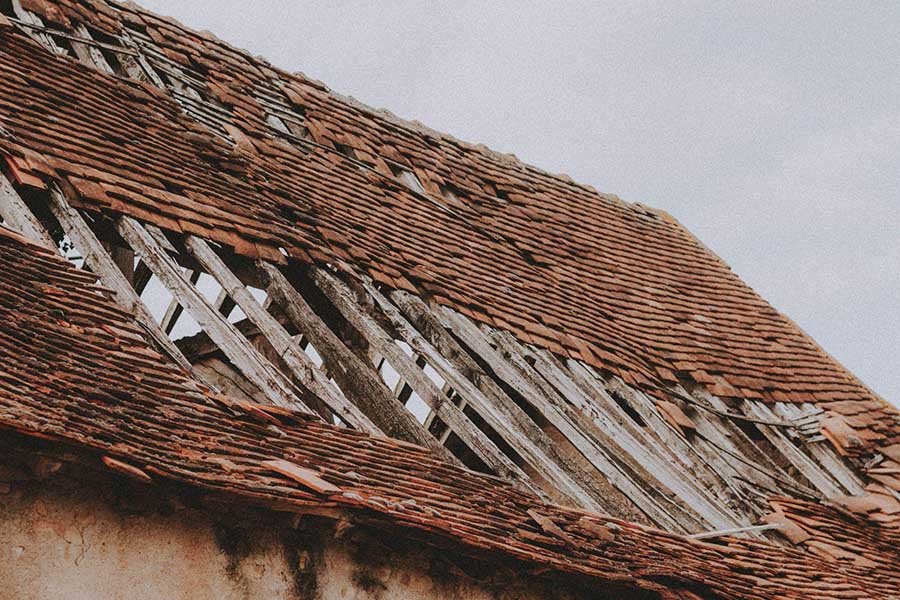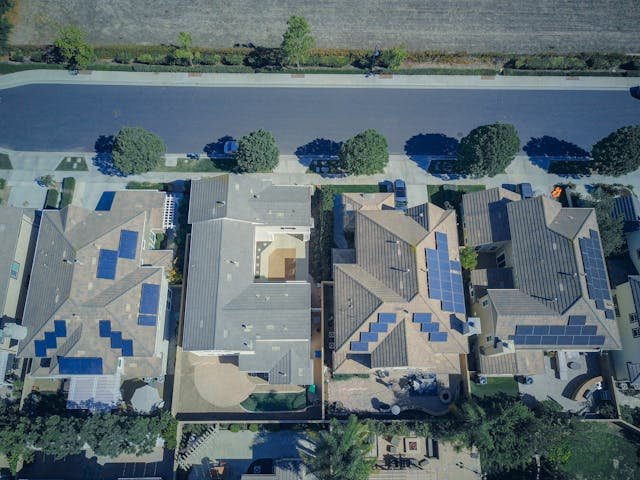With over a million roofing repairs made each year, it’s no wonder that roof replacement is one of the most common home improvement projects. But how do you know when your roof is ready for a change? Here are some signs that your roof needs to be replaced:
Your Roof is Leaking
Leaking roofs are one of the biggest signs that your roof needs to be replaced, but there are other signs as well.
If you notice water coming through the ceiling of your home, that’s a sign that you might have a leaky roof. If you see water on the inside of your window sills or the walls, it could be due to a leaky roof. If you see water dripping from the gutters and downspouts of your house, this can be another sign of a leaky roof. A leaking roof is more than just an inconvenience; it can cause damage to your home and even destroy it if left untreated. This could mean that the waterproofing has become damaged over time and needs to be repaired or replaced with roof waterproofing completely before further damage occurs.
Your Roof is Over 20 Years Old
If your roof is more than 20 years old, you should start considering replacing it. The lifespan of most roofs is about 20 years, but they can last longer if they’re well-maintained and not exposed to extreme weather conditions. If you want your home’s exterior to look good for as long as possible and save money on repairs or replacements, then plan by having a new roof installed before the current one starts showing signs of wear and tear. If you see any of the following things on your roof, then it’s time to start thinking about replacing it:
-Missing or cracked shingles
-Missing or cracked tile
-Brown spots on the surface of the shingles or tiles (indicating that they’ve been exposed to too much sun)
Missing Granules
Granules are a key component of a properly sealed roof. If you find that your granules are missing, it means that the roof is not as well-sealed as it should be. This can lead to more issues down the line such as leaks and mould growth.
If you want to keep an eye out for early signs of needing new shingles or tiles, look for:
- No granules on your roof (or if there are only small amounts)
- Dirt in between the shingles (this shows other parts of your home aren’t clean enough)
The Roof is Buckling
Buckling is a problem that can occur in many different ways. The most common cause is improper installation, but buckling can also occur if you don’t maintain your roof properly and allow it to rot away over time. If you notice any kind of buckling on your roof, it’s best to have a professional come out and inspect the problem right away if not sooner.
If you see any signs of buckling or warping in your shingles or gutters, this could indicate that there’s been water damage from leaks underneath the surface of your home’s exterior walls or ceilings. If left untreated for too long (or at all), these leaks could lead to mould growth inside those spaces which would make them uninhabitable by causing respiratory problems like asthma attacks as well as skin irritation issues such as rashes due directly related exposure over prolonged periods time spent inside these rooms without proper ventilation systems installed like air conditioners installed inside each room where possible instead.
Moss and Mildew
When you see moss or mildew on the shingles of your roof, it’s probably time to consider replacing it. Moss and mildew are both signs that your roof is not being protected from the elements as well as it could be. If there’s moss growing on your roof, this indicates that water is pooling in places where it shouldn’t be. This can cause leaks and damage to the structure of your home, as well as create an environment for mould growth. Mildew is another sign that moisture has infiltrated your roofing system and caused damage. Mildew can also lead to mould growth, which can cause health problems for people with respiratory issues or allergies.
If you want to protect your home from these issues, you may need to replace your roof before it becomes too damaged which means now would be an excellent time.
Flashing Problems
If you notice a significant amount of flashing problems, it’s time to replace your roof. Flashing is the material that covers areas where waterproofing is needed, like around chimneys and vents. When flashing becomes damaged or loose, it can cause leaks and water damage.
The first sign that your flashing needs to be replaced is if water starts to drip behind vents or downspouts. In addition, if you see mould or mildew growing on your shingles or around windows and vents, this could indicate a problem with the flashing as well.
Worn Shingles
Worn shingles are a common sign that your roof needs to be replaced. While it may seem as though they’re just old and worn, they can be a sign that your roof is in more trouble than you think.
The shingles themselves are made of asphalt, which tends to break down when it’s exposed to sunlight. As the shingles slowly degrade over time, the integrity of your entire roof begins to weaken. The shingles will become more brittle and will begin cracking or curling up at the edges, giving way to water penetration into the interior of your home. Shingles should be replaced when they are worn out or when their granules have worn off–this is usually after about 15 years.
If this happens before you notice it, there’s a chance that you could end up with mould growth inside your walls or even leaks in ceilings and floors.
When deciding whether or not to replace your existing roof with a new one, there are several factors to consider:
- How long does an average homeowner stay in one place? If you’re moving within five years or less from now then having someone install new shingles might not be worth the investment since they’ll likely need replacing again before long anyway; however, if this isn’t something that worries you then go ahead!
Conclusion
If you’re concerned about your roof, it’s important to get it inspected. The best way to do this is by hiring a professional who can tell you if there are any problems with your home’s structure or if it needs repairs. This will help keep your family safe from any potential hazards and allow you to make informed decisions about what type of replacement would be best for your situation.
















